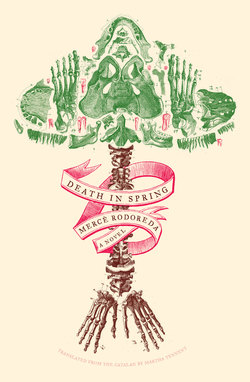Описание книги
Considered by many to be the grand achievement of her later period, Death in Spring is one of Mercè Rodoreda's most complex and beautifully constructed works. The novel tells the story of the bizarre and destructive customs of a nameless town—burying the dead in trees after filling their mouths with cement to prevent their soul from escaping, or sending a man to swim in the river that courses underneath the town to discover if they will be washed away by a flood—through the eyes of a fourteen-year-old boy who must come to terms with the rhyme and reason of this ritual violence, and with his wild, child-like, and teenage stepmother, who becomes his playmate. It is through these rituals, and the developing relationships between the boy and the townspeople, that Rodoreda portrays a fully-articulated, though quite disturbing, society. The horrific rituals, however, stand in stark contrast to the novel's stunningly poetic language and lush descriptions. Written over a period of twenty years—after Rodoreda was forced into exile following the Spanish Civil War— Death in Spring is musical and rhythmic, and truly the work of a writer at the height of her powers. Mercè Rodoreda is widely regarded as the most important Catalan writer of the twentieth century. Exiled to France during the Spanish Civil War, and only able to return to Catalonia in the mid-1960s, she wrote a number of highly praised works, including The Time of the Doves and Death in Spring . Martha Tennent was born in the U.S, but has lived most of her life in Barcelona where she served as founding dean of the School of Translation and Interpreting at the University of Vic. She translates from Spanish and Catalan, and received an NEA Translation Fellowship for her work on Rodoreda.
